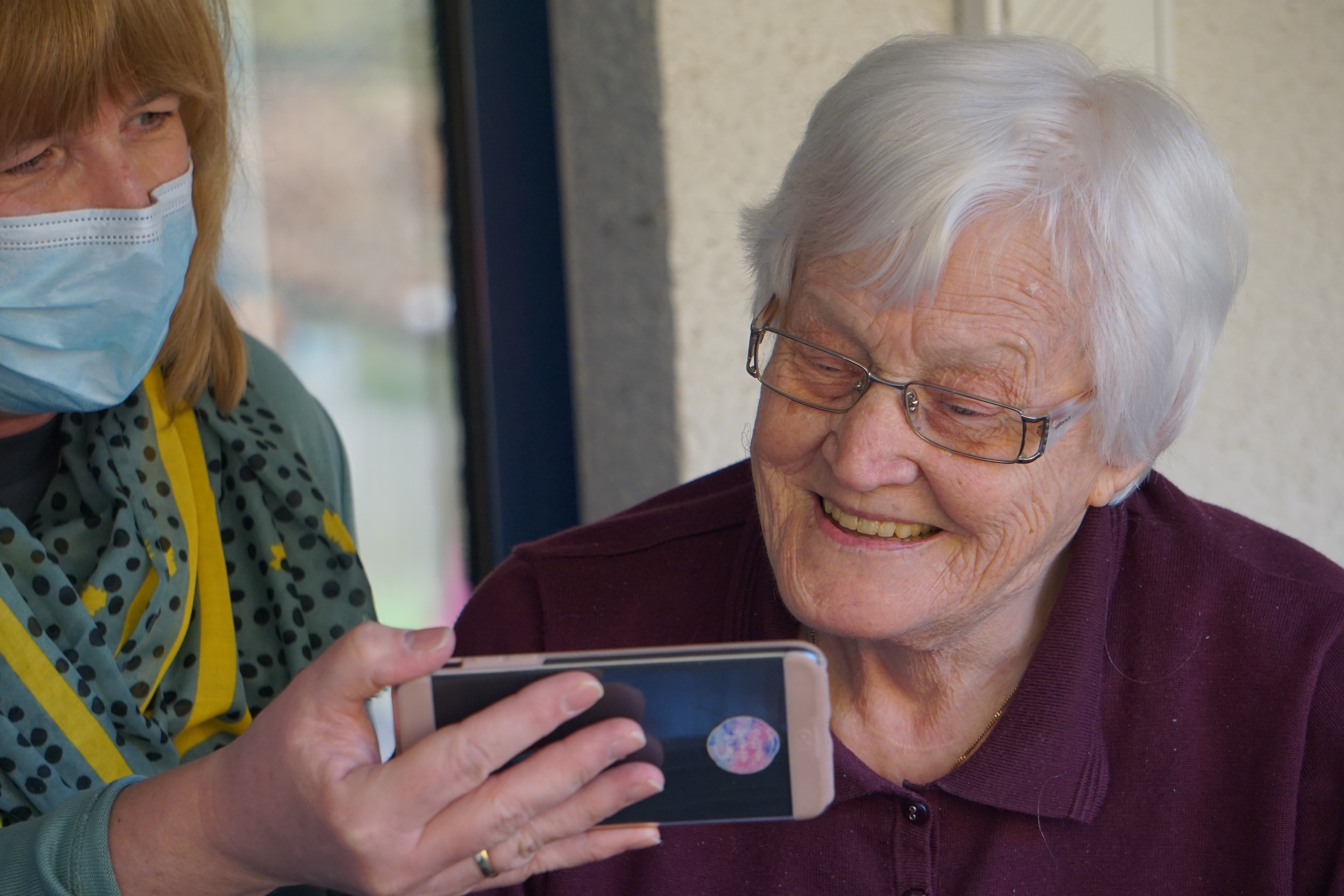
5 Tips to Communicate Effectively with Nonverbal Patients
April 05 2019
Better Communication Leads to Better Care
Successful interaction with nonverbal patients comes out of your desire to communicate with them. Don’t assume that a nonverbal patient is deaf or cannot understand. Show that you wish to communicate with them. Communication can be one of the most important parts of patient care as it results in offering care that is truly needed, rather than just trying random tactics to see what works. Catching problems and caring for them in a timely manner can make a world of difference for many patients.
Communication, however, is more than just speaking out loud with our voices. There are many nonverbal ways that people speak, such as passive body language, pointing, writing and sign language. Not all patients have the ability or wish to speak. Some disorders make speech more difficult while others may be so upset, they just can’t speak. However, with a little patience and using some different forms of communication, you will be able to effectively communicate with your nonverbal patients.
Observe Nonverbal Cues
1One of the most important things you can do with any patient, but especially nonverbal ones, is to pay attention to nonverbal cues such as body language. Nonverbal cues can include eye movement, restlessness, facial expressions, rigid limbs and even moaning. Sometimes these nonverbal cues can give you even more insight into what your patient needs rather than just what they “tell” you. Be on the lookout for nonverbal signs of discomfort, depression and anxiety.
Use Close Ended Questions
2Asking yesor noquestions allows the patient to simply nod or shake their head in response or perform other simple movements, such as raising their eyebrows for yes. For example, ask, “Does your knee hurt?” rather than asking, “What is causing you pain?” It may take more time because you might have to ask a series of questions, but this will allow you to be more confident in the resulting care that you provide.
Put it Down on Paper
3Some patients may be able to write what they wish to say to you. Others may find it easier to point at pictures. When working with these types of nonverbal patients, make sure to have a pen or marker and pad of paper handy so that they can write what they need or you can draw pictures for them to choose from. Patients who are nonverbal permanently or for extended periods of time may benefit from having picture books or an app on a tablet that are made just for this purpose.
Learn Some Sign Language
4You might want to consider learning sign language or at least some of the more basic signs, such as those for pain, moods and emotions, personal hygiene, thirst, hunger and other daily activities. It can help you communicate more easily with patients that already know sign language. For those that are newly nonverbal or nonverbal for extended periods, help them learn some of these basic signs to help them more easily communicate with you.
Above All, Practice Patience and Confidence
5Know that communicating with nonverbal patients may take more time. It is important to be patient with them. Do not show anxiety about running behind because they are taking more of your time, this will only cause them more distress. Nonverbal patients deserve the same care and attentiveness as your other patients. Treat them with respect and never speak to them like they do not understand what you are saying to them. Remember that it can be just as frustrating for your nonverbal patients when they are trying to communicate their needs with you.
Be sure to show confidence when communicating with your nonverbal patients. If you indicate in any way that you are not confident in communicating, it can in turn make them feel hopeless as well, causing communication to break down. Even if you get frustrated because you are having a hard time understanding, show your patient that you care and are willing to take the time to understand. Effective communication is a team effort, so remember to keep encouraging yourself and your patient.
When you and your nonverbal patients can communicate effectively with one another, it can help patients feel less frustrated. Lowering stress levels can lower blood pressure and stabilize respiration, helping patients to heal faster or feel less discomfort. Effective communication also means less risk of medical errors and that you are able to provide effective and meaningful care for your patients.





